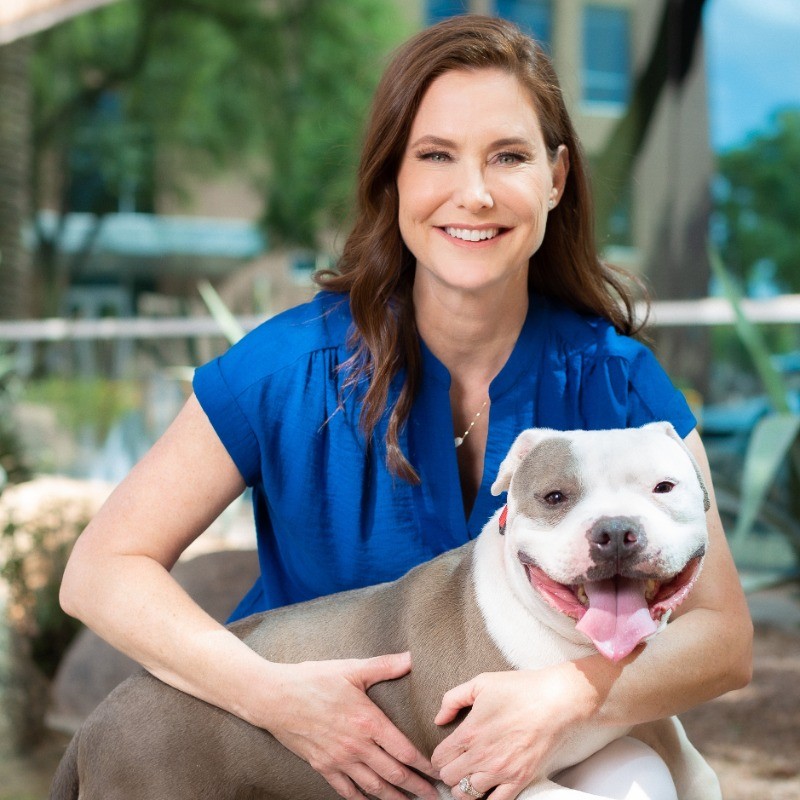If People Are Hungry, Their Pets Are, Too
4 min read
For so many of us, our pets are more than close companions — they are family. In
fact, of the 86.9 million US
households that have
pets, a full 97
percent
consider their pets to be part of their family. Yet, as much as our pets
contribute to our family unit, our homes and our joys, they also share our
hardships. And for far too many people, this includes hunger.
Food insecurity is one of the defining challenges of our time. With over 47
million people across the US experiencing food
insecurity, hunger knows no
boundary, no zip code — it impacts 100 percent of communities across the nation.
Despite signs of an improving economy, high food costs and expenses such as rent
have intensified food insecurity for many
families.
Food banks have reported increased pressure from the growing number of people
experiencing food insecurity. With an estimated 30 million
pets
facing hunger alongside their owners, it is likely that people seeking support
from food banks have a pet at home in need of assistance, too.
Access to healthy, nutritious and consistent meals should not be a luxury — for
people or pets — and the pathways for providing accessible food for people
facing hunger should not be mutually exclusive to those designed for pets facing
hunger.
Feeding pets is not just an act of goodwill; it is also important to our overall
community health, as pets can positively
impact our wellbeing — providing companionship, emotional support and health
benefits. Our pets can serve significant service and therapeutic roles and
provide vital companionship and social connections for many families,
individuals and senior adults, and can lead to better physical and mental
health and
wellbeing.
Communicating complex, unfamiliar sustainability claims on CPG packaging
Join us as Applegate and HowGood share insights into marketing lessons, consumer response and understanding, and marketplace data on the expression and communication of new categories of sustainability claims on CPG packaging – as well as tips for avoiding consumer and industry backlash and controversy – Wed, Oct. 16, at SB’24 San Diego.
Yet as families grapple with high costs for essentials including housing,
groceries, medication and transportation, many are finding it increasingly
challenging to manage the expenses associated with their pets. 41
percent of pet parents already report difficulties in keeping up with the increasing
costs of pet care and one in
five
pet parents experiencing food insecurity have reported foregoing their own meals
to instead feed their pets.
A key solution for solving hunger at both ends of the leash lies in the
collective action between organizational partnerships and community involvement.
PetSmart Charities launched the annual Pet
Hunger Awareness
Day®
campaign as a call to action that coincides with Feeding
America®’s Hunger Action
Month®
(September) to elevate the conversation around the full impact of food
insecurity on people and pets. Our two organizations began our partnership in
2017; and since then, over 298 million pet meals have been provided across the
Feeding America network of partner food banks. Additionally, more than 13
million meals have been provided through PetSmart Charities’ five-year
partnership with Meals on Wheels
America; and over 40 million meals have
been donated through additional efforts across the US — culminating in 350
million meals for pets in need.
Since 2021, local Feeding America partner food banks have also reported a
consistent increase in demand for pet food as part of this partnership. By
making pet food available at food bank distributions, people can gain access to
resources for both their families and their pets. This critical support helps
pets stay with their loved ones and do what they do best — offer unconditional
love.
Serving people in need can be an incredible entry point for serving pets in
need, too. Through building comprehensive strategies that leverage the
resources, spaces and infrastructure dedicated to combating hunger, we can
accommodate pet parents seeking nutritious meals for their entire families —
two-legged and four-legged members alike.
As we recognize the second annual Pet Hunger Awareness Day and Hunger Action
Month this month, we’d encourage others to reach out to their local food banks
to uncover pathways to supporting pet-hunger relief programs in their community
— from in-kind donations of pet food to volunteering to help with a distribution
event. All efforts make an impact.
Collectively, we have both an opportunity and an obligation to address these
challenges holistically and shift the conversation on how we can work to nourish
both people and their pets — so they can thrive together. Because when people
build better lives for their pets, the quality of their lives can improve, too.








